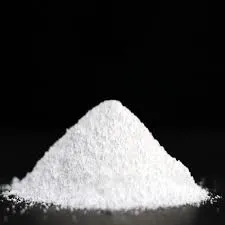The Importance of Water Cleaning Chemicals
Water is one of the most essential resources on our planet, playing a crucial role not only in sustaining life but also in various industrial processes, agriculture, and everyday activities. However, the water we consume and use is frequently contaminated by pollutants and pathogens, necessitating effective purification methods. This is where water cleaning chemicals come into play; they are vital for ensuring the safety and quality of our water supply.
Understanding Water Contamination
Water contamination can arise from various sources, including industrial discharges, agricultural runoff, wastewater from households, and even natural disasters. Contaminants can include bacteria, viruses, heavy metals, pesticides, and organic compounds, which can pose significant health risks to humans and wildlife. Therefore, it is essential to utilize appropriate water cleaning chemicals to neutralize these harmful substances and restore water quality.
Types of Water Cleaning Chemicals
There are several categories of water cleaning chemicals, each specializing in addressing different contaminants.
1. Disinfectants These chemicals, such as chlorine and ozone, are used to kill bacteria, viruses, and other microorganisms. Disinfection is a critical step in water treatment to ensure that the water is safe for consumption. Chlorine is one of the most widely used disinfectants due to its effectiveness and cost-efficiency, while ozone is preferred for its ability to eliminate pathogens without leaving harmful residues.
2. Coagulants Chemicals like aluminum sulfate and ferric chloride are used in the coagulation process to remove suspended particles from water. When these coagulants are added, they cause smaller particles to clump together, forming larger aggregates that can then be filtered out. This process is crucial for improving water clarity and reducing turbidity.
water cleaning chemicals

3. Flocculants Often used in tandem with coagulants, flocculants help to further aggregate particles for easier removal. Polyacrylamide is a common flocculant that enhances the efficiency of water treatment systems, making it easier to achieve clear, clean water.
4. pH Regulators Maintaining the correct pH balance in water is important for both health and taste. Chemicals like sodium hydroxide or sulfuric acid are used to adjust the pH level, ensuring it remains within a safe range. This regulation not only improves water quality but also enhances the effectiveness of other treatment processes.
5. Oxidizers These chemicals are used to break down organic contaminants. Hydrogen peroxide and potassium permanganate are examples of oxidizers that can degrade harmful substances and improve the overall quality of the water.
Environmental and Health Considerations
While water cleaning chemicals play a crucial role in water purification, it is important to consider their environmental impact. Many traditional chemicals can lead to the formation of harmful by-products that may contaminate water systems if not managed properly. As a result, there is a growing trend toward the development of more eco-friendly alternatives and innovative treatments, such as advanced oxidation processes and bioremediation, which rely on natural processes to purify water.
Furthermore, rigorous regulations are in place to ensure that the chemicals used in water treatment do not pose risks to human health or the environment. Monitoring and testing are essential components of water management, ensuring that treated water meets safety standards before it is distributed for public consumption.
Conclusion
Water cleaning chemicals are integral to maintaining the supply of safe drinking water and protecting public health. As our understanding of water quality and contamination evolves, so too does the technology and chemicals used in treatment processes. By investing in research and development of safe and efficient water cleaning chemicals, we can ensure that future generations will have access to clean and safe water — a basic human right that is foundational to health, prosperity, and sustainability.

